Introduction
FACTS THAT MATTER
Oceans are estimated to make up 96.5 % of the water on the planet. Fresh water makes about 2.5 percent of the entire. 70% of this clean water is stored in icebergs in Antarctica, Greenland, and mountainous places in the world, whereas less than 30% is stored in the worlds largest aquifers.
India receives roughly 4% of all global aid. In terms of water availability per person per year, it ranks 133rd in the world.
WATER SCARCITY AND THE NEED FOR WATER CONSERVATION AND MANAGEMENT
Water scarcity is caused by overexploitation, increased economic activity, inappropriate use, and unequal drinkable water among various cultural groups, among other factors. India’s post-independence period saw rapid industrial growth. In India, hydroelectricity accounts for roughly 22% of total electricity production.
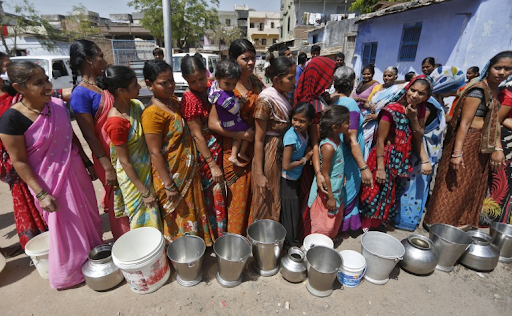
MULTI-PURPOSE RIVER PROJECTS AND INTEGRATED WATER RESOURCE MANAGEMENT
We have also been building hydraulic structures for irrigation since ancient times, such as stone rubble dams, dams or lakes, earthworks, and waterways. Both hydel power generating and irrigation are done with water from the Satluj Beas river system and even the Bhakra-Nangal scheme. Number of co-projects and large dams have sparked many social movements, including the ‘Narmada Bachao Andolan’ and the ‘Tehri Dam Andolan.’
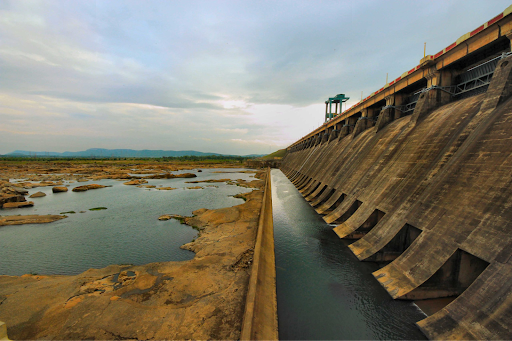
As a result of irrigation, cropping patterns in many regions have changed, with farmers opting for more water-intensive and commercial crops. As the costs and benefits of the number of co-projects are shared, inter-state water conflicts are becoming more common.
Excessive water use also caused earthquakes, spread moisture pests and diseases, and contaminated the ecosystem.
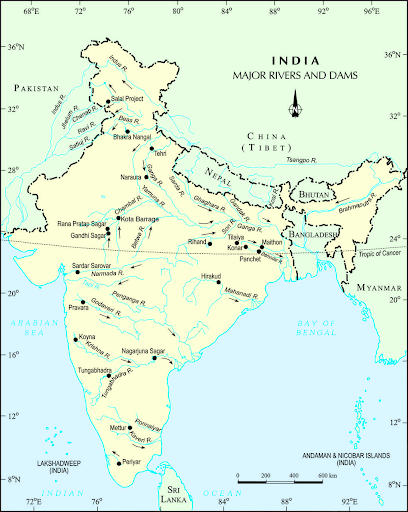
RAINWATER HARVESTING
- Water reuse is a technique for collecting and preserving rainwater through the use of hydro infrastructure like hand pumps and partially dug wells.
- People in steep and mountainous places create bellies or kuls, which are agricultural diversion canals. Rainwater collection from rooftops was a common practice in Rajasthan for retaining water supply.
- Flood channels were built to irrigate land in the Bengal flood plains.
- Every family in Rajasthan’s semi-arid and desert districts, such as Jaisalmer, Phalodi, and Bikaner, has a subterranean tank for storing potable water called a tank. Rainwater, also known as Palar pani, is regarded as the purest kind of aquatic environment in these areas.
- Rooftop rainwater collection is the most common practice in Meghalaya, Assam.
- Mawsynram, located 55 kilometres from Shillong, receives the world’s heaviest rainfall.
- The bamboo irrigation water method, a 200-year-old system of extracting stream and rainwater, is employed in Meghalaya.
- Tamil Nadu may be the first state in India to require all homeowners to collect rainwater on their roofs. Those who fail to pay their bills face legal consequences.
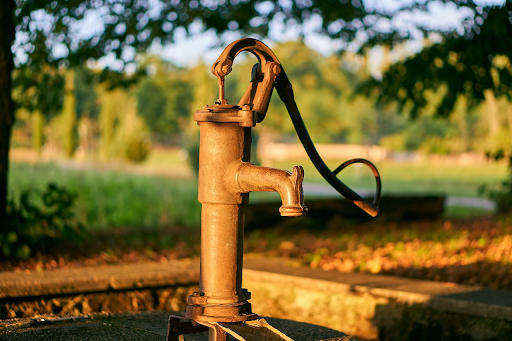
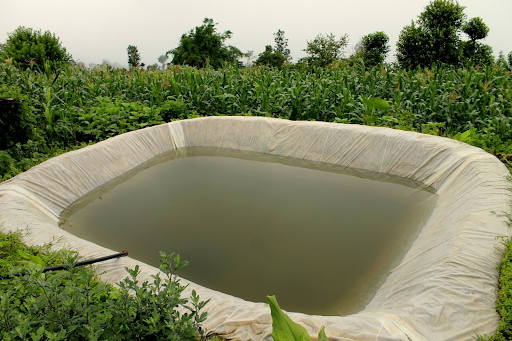
Outro
NCERT Notes For Class 10 Social Science (History) Chapter 3 – Water Resources
Water Resources Are Discussed In Chapter 3 Of Class 10 Geography. The Chapter Opens By Discussing The Availability Of Fresh Water On Earth And The Consequences Of Water Shortage. The Chapter Addresses The Advantages And Disadvantages Of Damming Rivers. Finally, The Chapter Discusses Rain Water Harvesting As A Method Of Conserving Water. The CBSE Notes For Class 10 Geography Chapter 3 On Water Resources Have Been Put Here. These Notes Include All Of The Chapter’s Significant Points.
CBSE Class 10 Social Science Notes Will Assist Students In Studying The Topic Thoroughly And Clearly.
These CBSE Class 10 Social Science Notes Were Written By Subject Experts Who Made The Study Material Very Basic, Both In Terms Of Language And Format.
NCERT Solved Question Answer CBSE Class 10 Geography Chapter 03 – Water Resources
Question 1.
(1) Based on the information given below classify each of the situations as ‘suffering from water scarcity’ or ‘not suffering from water scarcity’.
(a) Region with high annual rainfall.
(b) Region having high annual rainfall and large population.
(c) Region having high annual rainfall but water is highly polluted.
(d) Region having low rainfall and low population.
Answer:
(a)not having a shortage of water.
(b) Not having a shortage of water.
(c) Not getting enough water.
(d) Not having enough water.
(2) Give an argument in favour of multi-purpose river projects.
Answer: Electricity is made by projects that can be used for more than one thing. In the Satluj-Beas river basin, for example, the water from the Bhakra-Nangal project is used both to make hydroelectric power and to grow crops.
Question 2.
Answer the following questions in about 30 words :
(1) Explain how water becomes a renewable resource.
Answer: The hydrological cycle makes water a renewable resource. Most of the fresh water on Earth comes from surface runoff and groundwater that is constantly being renewed and refilled by the hydrological cycle. So, all of the rain, surface runoff, and groundwater that moves within the hydrological cycle makes sure that water is a renewable resource..
(2) What is water scarcity and what are its main causes?
Answer: Water scarcity means that there isn’t enough water in places with low rainfall or that are prone to drought. It also has to do with the fact that there is a lot of bad water around. For example, in Rajasthan, we see women walking long distances to get water while balancing many “Matkas,” which are earthen pots used to collect and store water. The amount of water resources available changes over time and space, mostly because of changes in seasonal and annual rainfall. So, it means there isn’t enough water to meet the needs of the area.
- The main causes of scarcity of water are mentioned below :
- Increase in population: There isn’t enough water because there are a lot of people and their numbers are growing. These people need more water for their own homes and to grow more food. This means that water resources are used too much to expand irrigated areas and dry-season farming. When more tubewells are dug for irrigation, the groundwater level goes down. This makes water harder to get.
- Intensive industrialisation: After India got its independence, there has been a lot of industrialization. More industries need more water and more power to run. So, to meet the requirement, energy is made from hydroelectric power. So, industrialization has led to more people using water. In India, hydroelectric power makes up 22% of all the electricity made.
- Urbanisation: The growth of cities with large, dense populations and urban lifestyles has not only increased the need for water and energy but also made the problem worse. People have their own pumping systems to get water from the ground. This causes cities to overuse and run out of resources.
- Lack of water is also caused by bad water quality. Even if there is enough water in an area, it could be contaminated by waste from homes and businesses, chemicals, pesticides, and fertilisers used in farming, making it unsafe for people to use.
- Unequal access to water among different social groups: Sometimes, the poor people in Jhuggi-Jhopri colonies may not be able to get water. The wealthy people in their colonies may get water. This policy of discrimination and unequal access to water makes it hard for poor people, especially in cities, to get enough water.
(3) Compare the advantages and disadvantages of multi-purpose river projects.
Answer:
Advantages:
- The dams built as part of the multi-use projects help to water fields where crops are grown.
- Projects with more than one use help make electricity. For example, the Bhakra-Nangal project is used both to make hydroelectric power and to water crops.
- It gives people and businesses access to water.
- It helps keep floods under control. For instance, the Hirakud project in the Mahanadi basin both saves water and keeps floods from happening.
- People come to these places to relax and have fun.
- These projects will help people get around on land.
- Fish breeding has gotten better because of these projects.
- Due to the above benefits, it was thought that multi-purpose projects would help the country develop and move forward. Jawaharlal Nehru was proud to call the dams the “temples of modern India” because they would bring together the growth of agriculture and the economy of villages with the rapid industrialization and growth of the economy of cities.
Disadvantages :
- In the semi-arid and arid parts of Rajasthan, especially in Bikaner, Phalodi, and Barmer, almost all of the houses used to have underground tanks, or tankas, to store drinking water.
- The tanks might be as big as a room.
- One home in Phalodi had a tank that was 6.1 metres deep, 4.27 metres long, and 2.44 metres wide.
- These tankas were part of a well-designed system for collecting rainwater from roofs.
- These were built inside the main house or in the courtyard. A pipe connected them to the sloped roofs of the houses.
- Rainwater from the roofs would flow down the pipe and be stored in these underground “tankas.”
- Usually, the first rain was not collected because it cleaned the roofs and pipes. Then, the rainwater from the next rainstorms was collected.
- Tankas are used to store rainwater until it rains again.
- It is the most reliable way to get water to drink when all other sources are dry, especially in the summer.
- Rainwater, which is called “palar pani,” is thought to be the cleanest natural water. Not only that, but many homes build underground rooms next to the “tanka” to keep the room cool in the summer.
- But people aren’t collecting rainwater from their roofs as much as they used to because the Rajasthan Canal keeps a lot of water in the area.
Question 3.
Answer the following questions in about 120 words :
(1) Discuss how rainwater harvesting in semi-arid regions of Rajasthan is carried out.
Answer:
- In the semi-arid and arid regions of Rajasthan, particularly in Bikaner, Phalodi and Barmer, almost all the houses
- traditionally had underground tanks or tankas for storing drinking water.
- The tanks could be as large as a big room.
- One household in Phalodi had a tank that was 6.1 meters deep, 4.27 meters long and 2.44 meters wide.
- These tankas were part of the well developed rooftop rainwater harvesting system.
- These were built inside the main house or the courtyard. They were connected to the sloping roofs of the houses through a pipe.
- Rain falling on the rooftops would travel down the pipe and was stored in these underground ‘tankas’.
- The first spell of rain was usually not collected as this would clean the roofs and the pipes. The rainwater from the subsequent showers was then collected.
- The rainwater is stored in the tankas till the next rainfall.
- It is the most reliable source of drinking water when all other sources are dried up, particularly in the summers.
- Rainwater called as ‘palar pani’ is considered the purest form of natural water. Not only this, many houses construct underground rooms adjoining the ‘tanka’ to beat the summer heat as it would keep the room cool.
However, the practice of rooftop rainwater harvesting is on the decline due to the perennial Rajasthan Canal which has made the availability of plenty of water in the area.
(2) Describe how modern adaptations of traditional rainwater harvesting methods are being carried out to conserve and store water.
Answer: Modern adaptations of traditional rainwater harvesting methods are being carried out in many parts of the country to conserve and store water as mentioned below :
- Nearly 200 households in Gendathur village in Mysore, Karnataka, have set up systems to collect rainwater.
- Gendathur gets 1,000 mm of rain a year, which means that each house can collect and use 50,000 litres of water a year if they are 80 percent efficient and do about 10 fillings.
- The 20 houses collect a total of 1,000,000 litres of rainwater each year. So, the rainwater harvesting system is working well in Gendathur, which has the rare distinction of being full of rainwater.
- In addition to Gendathur, Tamil Nadu is the only state in India that requires all houses to have a rainwater collection system on the roof. There are legal ways to punish people who don’t pay.
- So, traditional methods of collecting rainwater are being updated and used in modern ways to save and store water.
- In Meghalaya, bamboo pipes have been used for 200 years to collect water from streams and springs. About 18 to 20 litres of water flow into the bamboo pipe system, travel hundreds of metres, and then slow down to 20 to 80 drops per minute at the plant’s location.